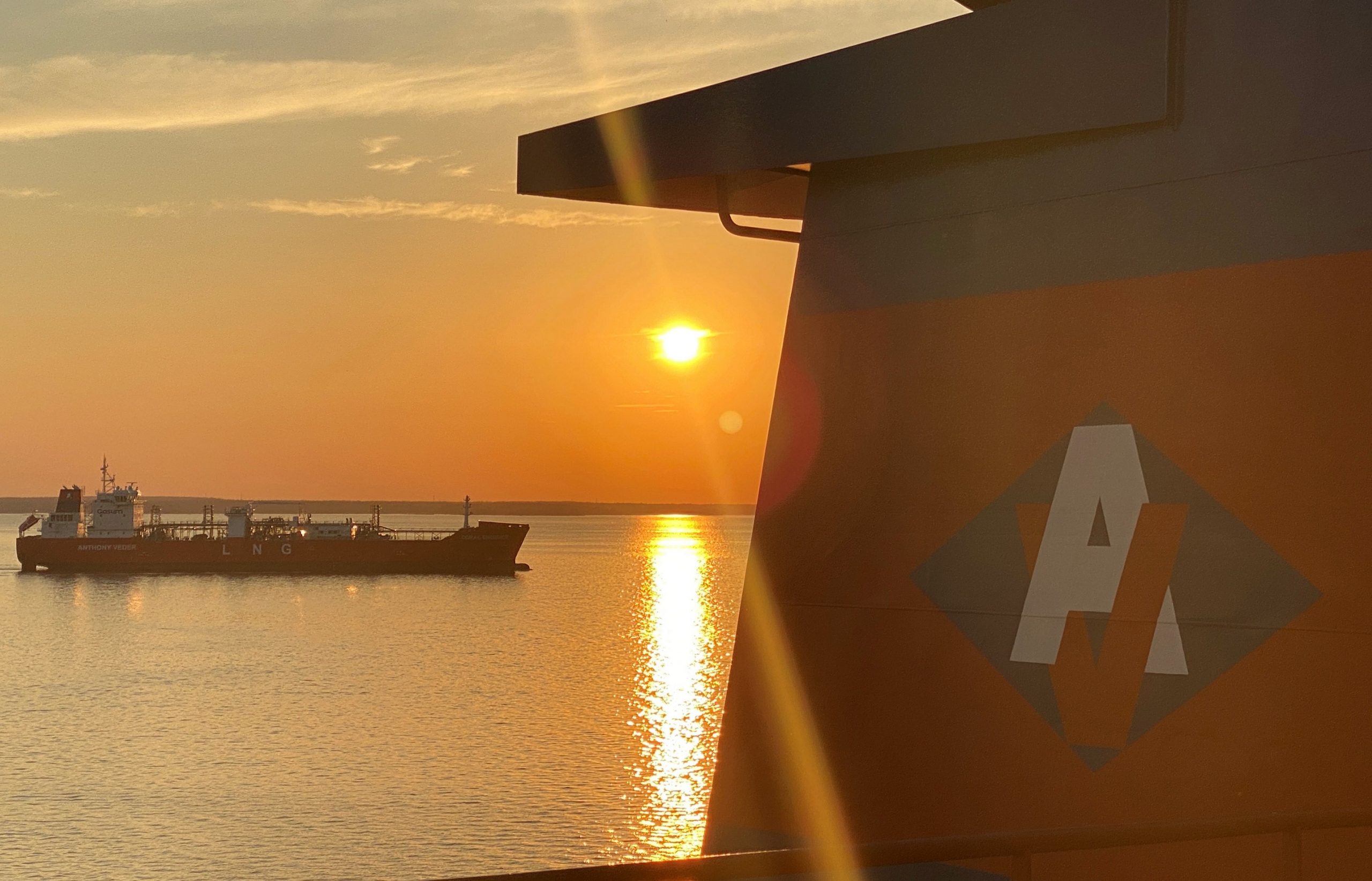
Factors that dictate a ship’s CII score
One of IMOs new regulations is the implementation of the CII (Carbon Intensity Indicator) for all vessels above 5000GT starting in on 1 January 2023. A till C scores are satisfactory. In case a vessel scores 1 time an E score or 3 times in a row a D score, a new SEEMP plan for this vessel needs to be submitted.
CII can be calculated by the following steps:
Use the formula of the annual efficiency rating (AER). It calculates the efficiency of the vessel during a full year (of course the score can be monitored throughout the year).
This is the formula:
AER = (∑CO2)) / (∑ distance sailed * summer deadweight) = [gCO2/dwt.nm]
- First we sum up all consumed fuel by the vessel. This is already being monitored by the IMO through their Data Collection System (DCS).
- Then we calculate the CO2 emissions, with the use of emissions factors. The amount of CO2 that is emitted varies between the fuels. For example for every ton LNG that we burn 2.75 tons of CO2 is emitted, while for MGO this is 3.206 tons of CO2.
- A few things are important to note:
- Only the emissions on the vessel are taken into account. Any emissions that are produced during the production of the fuel is not included.
- Greenhouse gas emissions such as methane (CH4), dinitrous oxide (N2O) and coolants are not yet taken into account.
- The distance sailed is also already being monitored in the IMO DCS system.
- The summer deadweight is a design figure, which is also a known figure in the IMO DCS.
Exclusion factors
Now we can calculate the AER score, but for CII we are allowed to modify this score with the use of exclusion factors. For Anthony Veder the cooling, ice passages and design factors for ice vessels can be used to improve our CII score. Let me explain this in more detail:
- Cooling:
it means that we are allowed to deduct 75% of the CO2 emissions that are produced while cooling in 2023. This percentage will be reduced in the coming years (so 72% in 2024, 69% in 2025 etc).
- Therefore, we have asked the vessels to monitor the running hours in the Veslink forms of the refrigerant compressor, cargo compressor and sea water pumps, as these are the largest consumers of the cooling plant. We try to eliminate this administration as soon as possible, however this information is not digitally available yet in our database.
- From running hours we will calculate the total work done (kWh), and via the specific fuel consumption (g/kWh) we will calculate the fuel consumption of the cooling plant. When we know the fuel consumption we can calculate the CO2 emissions and in the next step we deduct 75% of these emissions of the total CO2 emissions.
AER with cooling = (∑CO2 – 0.75 x ∑ CO2 cooling) / (∑ distance sailed * summer deadweight)
2. Ice passage:
for CII we are allowed to deduct the ice passages from our CII score. However, this means that we need to deduct the CO2 emissions as well as the distance sailed through the ice.
- For ports that are located in ice we are also allowed to deduct our consumption.
AER with cooling & ice = (∑CO2 −0.75∗∑CO2 cooling –∑CO2 in ice / (∑ distance sailed – ∑ distance sailed in ice) * summer deadweight
3. Design factors:
vessels that are designed to sail through ice there is also a correction factor for the summer deadweight. This because vessels that can sail through ice have additional steel for the strengthening of the hull, therefore these vessels are compensated for this extra weight.
AER with cooling & ice strengthening = (∑CO2 −0.75∗∑CO2 cooling –∑CO2 in ice / (∑ distance sailed – ∑ distance sailed in ice) * summer deadweight x deadweight correction factor.
After all correction factors are implemented we have an AER score, but now including the exemption factors. In the next step we need to calculate the CII score. Every vessel has a specific CII calculation table.
See in the table Coral Alicia. On the y – axis you can see the years, and on the x – axis the CII labels. The value in the fields indicate the minimal required AER score (with the associating correction factors) for a specific CII score. As can be seen, the vessels need to improve their AER score each year to keep scoring a specific label, because the requirements are getting more strict every year.
For example to score label A in 2023, Coral Alicia needs to have an AER score (with exemption factors) of 23.53 gCO2/dwt.nm or lower. For Coral Alicia to score an A in 2030 this needs to be reduced to at least 20.06 gCO2/dwt.nm.
| Coral Alicia | Required CII | |||
| A | B | C | D | |
| 2023 | 23.53 | 26.3 | 29.34 | 34.6 |
| 2024 | 23.03 | 25.74 | 28.72 | 33.87 |
| 2025 | 22.54 | 25.19 | 28.11 | 33.14 |
| 2026 | 22.04 | 24.64 | 27.49 | 32.42 |
| 2027 | 21.55 | 24.08 | 26.87 | 31.69 |
| 2028 | 21.05 | 23.53 | 26.25 | 30.96 |
| 2029 | 20.56 | 22.98 | 25.64 | 30.23 |
| 2030 | 20.06 | 22.42 | 25.02 | 29.5 |

